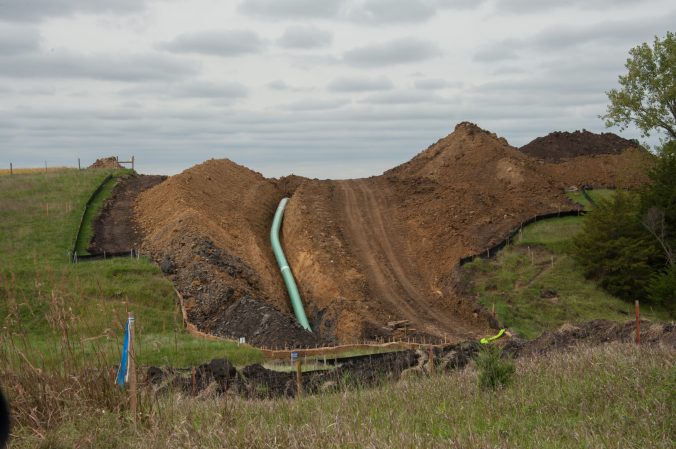

On Tuesday night the Keystone Pipeline bled 383,000 gallons of crude oil into the North Dakota wetlands, contaminating 22,500 square feet of land near the small town of Edinburgh by the time Canadian gas and oil company TC Energy intervened. This is the pipeline’s second significant leak since it began operations in 2011. TC energy reports that the unrefined petroleum is now contained, but the company won’t know exactly how much escaped until they’ve finished their cleanup efforts.
TC Energy, formerly known as TransCanada, reported the accident just hours after the U.S. State Department held a public hearing on the environmental impact of the company’s proposed Keystone XL Pipeline. Keystone XL would help funnel petroleum from Alberta, Canada to refineries near the Gulf of Mexico, creating an estimated 16,000 to 42,000 jobs—and passing over the Ogallala Aquifer, one of the world’s largest groundwater resources, where many fear it could leak. It is also anticipated to pass through the Missouri River, which is the Standing Rock Sioux Tribe’s water supply. As many as 10,000 people participated in protests against the project near the Standing Rock reservation from April 2016 to February 2017, but President Donald Trump approved its construction in 2017. TC Energy is expected to break ground next year.
According to TC Energy spokeswoman Sara Rabern, human and environmental safety are the company’s “top priority.”
“We will take the learnings from this incident, like we do with anytime we have any incident, and use them to improve our pipeline integrity,” Rabern told The Washington Post, adding that TC Energy spends “millions of dollars each year to ensure we operate [a] safe pipeline system.”

But indigenous organizations, Midwestern residents, and environmental activists fear that the existing pipeline’s two major spills (and steady stream of smaller leaks) are just the beginning. Stretching 2,147 miles from the tar sands in Alberta, Canada to Oklahoma, the Keystone Pipeline is capable of propelling 590,000 barrels of crude oil a day. The XL Pipeline will have a daily capacity of 830,000 barrels.
“Given TC Energy’s track record, and now another spill, it’s upsetting they can continue to put these non-reliable, dirty, and polluting pipelines in the ground,” says Kandi White, the native energy and climate campaign coordinator for the Indigenous Environmental Network, a nonprofit addressing environmental and economic justice issues. “There is no doubt that these new pipelines will spill. They are going to leak.”
TC Energy plans on employing vac trucks, backhoes, and other specialized equipment to recover the spilled oil, some of which has leaked into wetland areas. Wetlands are important natural landscapes that act as water filters, control flooding and erosion, and provide food for wildlife. Oil spills interrupt these functions by damaging plants and potentially contaminating nearby water sources—most notably groundwater that Americans rely on for crop irrigation and drinking. Crude oil is a known toxin that can cause skin rashes, irregular breathing, and long-term organ damage in humans.
“I fear people will become apathetic about spills because they occur so often,” says White, whose family lives on the Fort Berthold Reservation in North Dakota. “But it should not become the norm because it’s devastating.”






















